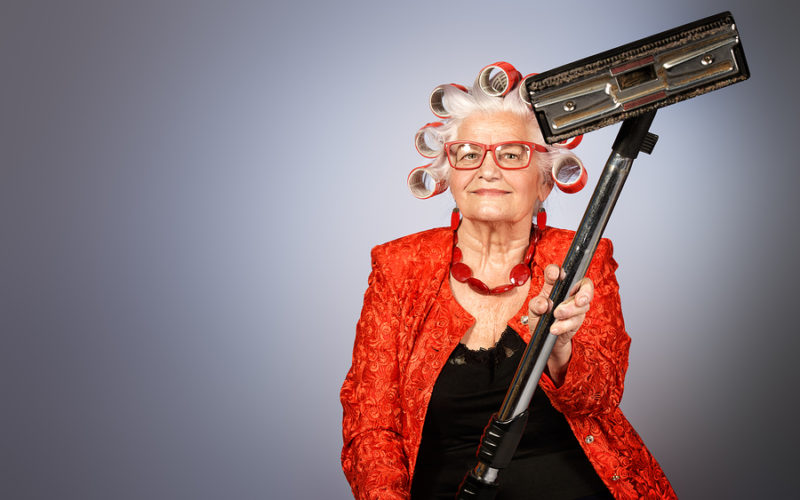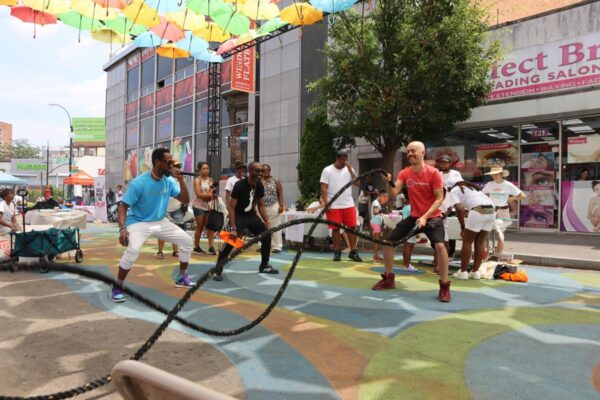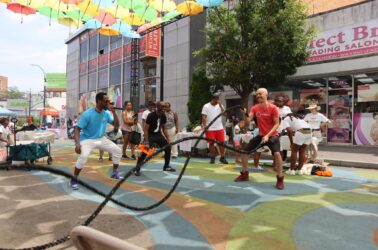By Chris Woolston (HealthDay)
Studies suggest that people who get enough of the right kinds of exercise can have bones that are up to 10 percent thicker than the bones of people who rarely, if ever, exercise. That may not sound like much, but even a small increase in bone density can greatly reduce the risk of broken bones.
Stronger bones are only the beginning. Regular exercise can also protect you from potentially bone-breaking falls by improving your strength and balance. A study in Turkey found that regular walks on a treadmill greatly improved the balance of women with osteoporosis. If you choose your workouts wisely and use just a little caution, exercise is a bonus for both you and your bones.
What are the best exercises for people with osteoporosis?
The bones in your spine and lower body are designed to support your weight. To increase bone density, you have to give these bones lots of opportunities to do their job. Walking, pushing a vacuum cleaner, or mowing the lawn — all of these so-called “weight-bearing” exercises can help build your bones. In a review of 18 studies about exercise and osteoporosis in postmenopausal women, the Cochrane Collaboration found that aerobics, weight-bearing exercise, and resistance exercises all helped build bone density in the spine, while walking improved bone density in the spine and hip.
Simple calisthenics that help improve how well you move are another good option. If, for example, you’re having trouble getting up from a chair, you can do this activity as exercise. Sit down and stand up several times until you’re tired. Whatever exercise you choose, try to do them for 30 to 60 minutes at a time at least three days a week. It’s also a good idea to consult with your doctor before starting a new exercise routine.
For best protection, combine weight-bearing exercises with resistance training with free weights, a weight machine, or elastic bands. These types of exercises are helpful for the bones in the upper part of the body, a place where women are often weak.
You don’t even have to pump serious iron to enjoy the benefits of resistance training. Start with exercises that you can easily repeat eight to 12 times. Ideally, you should have a physical therapist help you get started. Try working out three to four times a week, making sure to take at least one day off between your sessions. When you’re ready for more weight, add only a pound or two at a time. Whatever kind of resistance training you do, keep your back and neck supported.
A few warnings: You’ll probably have to work out regularly for at least six months to a year to add bone density. And if you ever stop exercising, you can quickly lose any gains you’ve made. In addition, some exercises aren’t especially helpful for weak bones. Swimming, for example, is great exercise. But since it doesn’t put any weight on your bones, you could spend the rest of your days in the pool without adding any significant bone mass. Riding a bike won’t do much for your bones, either, although it’s great for your heart.
Will I still need to take osteoporosis medications?
Exercise can’t replace osteoporosis medications. No matter how well you stick to your exercise program, you’ll still need to take your medicine. But medications are no substitute for exercise, either. If you’re not staying active, you’re simply not giving your bones the best protection possible.
Will I need a special diet while I exercise?
If you’re serious about exercise, you’ll have to be serious about nutrition, too. Your bones can’t build themselves unless they have plenty of raw materials. The National Osteoporosis Foundation suggests that everyone over 50 get 1,200 mg of calcium and 800 to 1,000 IU of vitamin D every day.
What precautions should I take while exercising?
When exercising to protect your bones, it’s important to not overdo it. Moderate exercise can help strengthen your bones, but extremely intense or prolonged exercise can actually make them more brittle and prone to breaks. Jogging, for example, is great exercise, but you probably want to limit yourself to 5 hours a week.
You don’t want to rush yourself, either. Talk to your doctor before you start any exercise routine. You may not quite be ready for some activities. If you’ve broken a bone in your spine or hip, you’ll want to wait at least a few months before starting any resistance training. If you’re not in especially good shape now, try walking just 3 minutes at a time twice a day for a week. Add one or two minutes a week, and it won’t be long before you’ll be going 30 minutes at a time.
Some activities can put too much stress on fragile bones. If your doctor says you’re at high risk for fractures in the spine, skip activities that require a lot of twisting, such as golf, bowling, and tennis. Calisthenics that curve the spine forward, such as toe touches and sit-ups, should also be avoided. Don’t use exercise machines that put too much pressure on the spine, including abdominal exercisers, cross-country ski machines, rowing machines, and stationary bikes with moveable handlebars.
Overall, the benefits of exercise far outweigh the risks. For a person with osteoporosis, staying still is the real danger.
References
Shipp KM. Exercise for people with osteoporosis: Translating the science into clinical practice. Current Osteoporosis Reports. 2006. 4: 129-133.
Gunendi Z et al. The effect of a 4-week aerobic exercise program on postural balance in postmenopausal women with osteoporosis. Rheumatology International. 2008. 28(12): 1217-1222.
South-Paul J. Osteoporosis: Part II. Nonpharmacologic and pharmacologic treatment. American Family Physician. 2001. 63(6). http://www.aafp.org/afp/20010315/1121.html
University of Washington Orthopaedics and Sports Medicine. Osteoporosis: Management and treatment. 2004. http://www.orthop.washington.edu/uw/osteoporosis/tabID__3370/ItemID__45/PageID__7/qview__true/Articles/Default.aspx
Hongo M et al. Effect of low-intensity back exercises on quality of life and back extensor strength in patients with osteoporosis: A randomized control trial. 2007. 18(10): 1389-1395.
American Physical Therapy Association. What you need to know about osteoporosis. 2008.
Johns Hopkins White Papers. Back Pain and Osteoporosis. 2008.
National Osteoporosis Foundation. Prevention exercise for healthy bones. http://www.nof.org/prevention/exercise.htm





















